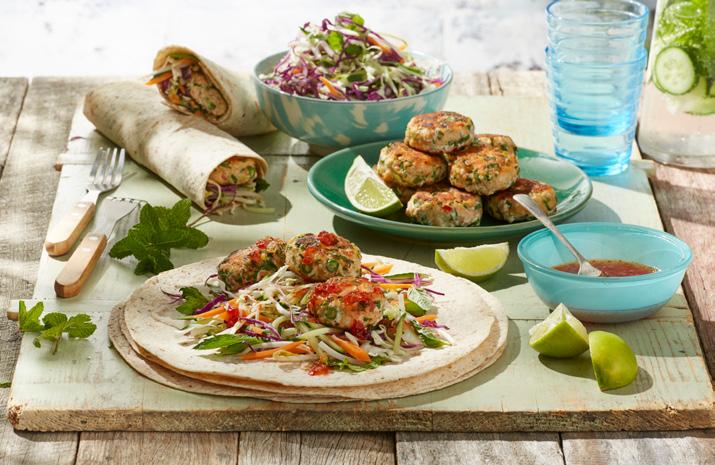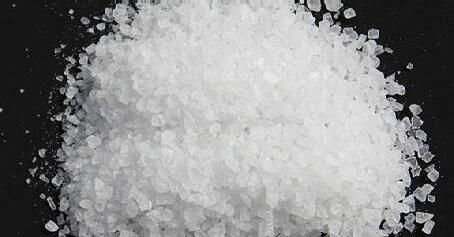
3 minute read
Worth your salt
from 2018-03 Sydney (1)
by Indian Link
Do you know how much salt you are consuming every day?
Ahead of World Salt Awareness
Week (12 – 18 March), dietitian Susie Burrell is calling on Australians to be aware of how much salt they consume.
The average Australian is consuming 9.6 grams of salt each day, double the World Health Organisation’s maximum daily recommendation of 5 grams.

Reducing our salt intake is easy if you’re aware of what’s in the food you’re eating.
“Australians are consuming worrying levels of salt, but it’s an easy fix if you’re aware of what’s in the food you’re eating. Swapping to lower salt food options is one of the best ways to make positive changes to your diet, so it’s essential to read the labels of packs and make comparisons between brands,” Susie Burrell says.
Susie suggests learning to read the labels of packs and make comparisons between brands.
Here, Susie puts the spotlight on a common pantry item, wraps.
“Not all wraps are the same, and the market’s leading brand contains high levels of salt,” Susie notes.
A team of researchers from the University of Newcastle undertook an evidence-based analysis of 22 of Australia’s top selling wraps brands and found some of the top sellers, which are often considered healthy options, are packed with salt and contain artificial preservatives.
The study found Helga’s Traditional White and Mixed Grain wraps contain 40% less salt than the market leading wrap and no artificial preservatives.
It’s for this reason Susie is urging people to check and understand food
THAI SALMON CAKES AND SALAD WRAPS > Makes 4 serves
Ingredients
4 Helga’s Mixed Grain Wraps
1 red chilli, roughly chopped
1 green chilli, roughly chopped
2 garlic cloves, peeled
2cm piece fresh ginger, peeled, roughly chopped
2 tbsp shredded coconut
500g skinless pin boned fresh salmon, roughly chopped
1 egg white
1 tbsp corn our
60g green beans, trimmed, thinly sliced
1 cup coriander leaves, chopped
Olive oil spray
Sweet chilli sauce, lime wedges, to serve
SALAD
1 carrot, cut into thin strips
2 Lebanese cucumber, cut into thin strips
2 cups shredded cabbage (red or green)
1 cup bean sprouts, trimmed
½ cup Thai basil or mint leaves
Method
Place chilli, garlic, ginger and coconut in a food processor, process until nely chopped. Add the salmon, pulse until nely chopped. Add the egg white and corn our, pulse to combine. Transfer to a bowl. Stir in the beans and coriander. Shape mixture into small cakes (about 2 tablespoons per cake) using wet hands.
>>
Preheat fan forced oven to 160°C. Heat a frying pan over medium-high heat. Spray both sides of the salmon cakes with oil, cook in batches for 2 minutes on each side until golden, transfer to a baking tray. Bake for 3-5 minutes or until cooked through. Remove from the oven and transfer to a tray.
>> labels and what they’re consuming:
Combine all the salad ingredients together. Place wraps onto a board. Top with salad and salmon cakes. Drizzle with a little sweet chilli sauce and a squeeze of lime. Roll the wrap to secure the lling.
“Wraps that contain around 600mg of sodium per 100g or less are considered to be moderate in salt according to the UK Food Standards Agency. Steer clear of anything over 600mg of sodium per 100g as that’s considered to be high in salt,” explains Susie.
But lower in salt doesn’t have to mean bland. Here, Susie presents a delicious, lower-salt recipe using Helga’s wraps to try at home.
Ten Tips For Reducing Your Salt Intake
1. Eat more fresh vegetables and fruit which are naturally low in salt.
2. Cut back on salty packaged or processed foods such as potato chips and other salty snack foods, packet soups and sauces, pies, sausage rolls, sausages, pizzas, and ready-made meals.
3. Check food labels or use the FoodSwitch app to choose lower salt foods. On food labels, look for foods with less than 400mg of sodium per 100g. The best choices are foods with less than 120mg of sodium per 100g.
4. Buy ‘reduced-salt’ breads and breakfast cereals, or check the food label to nd the lower salt option.
5. Cut back on processed meats such as bacon, ham, chorizo, and salami.
6. When cooking, limit salty sauces and condiments such as stock, soy and sh sauce, and table salt. Choose lower salt/sodium varieties if available.
7. Use herbs, garlic, and pepper as seasonings as they are naturally low in salt.
8. Take the salt shaker off the table.
9. Eat takeaway meals and foods only occasionally.
10. Follow the Australian Dietary Guidelines. For more info: .eatforhealth.gov.au









